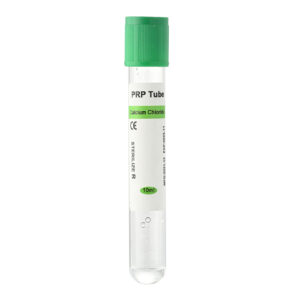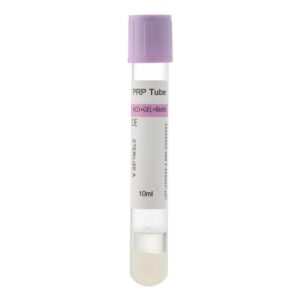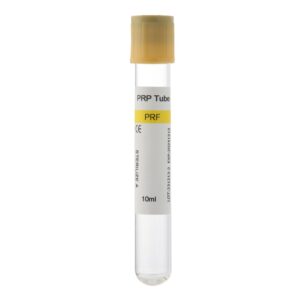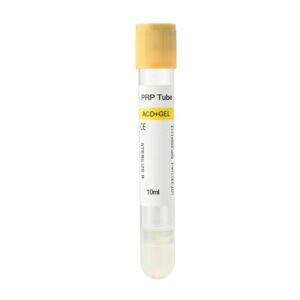PRP Before and After, PRP, or Platelet-Rich Plasma, is an autologous therapy that utilizes the growth factors and proteins in the blood to promote tissue healing and regeneration. By increasing the concentration of platelets and other bioactive substances, PRP accelerates the healing process and is widely used in both medical and cosmetic fields.
The PRP Extraction and Treatment Process
PRP treatment typically involves the following steps:
- Blood Sample Collection: The first step in PRP therapy is to draw a specific amount of blood from the patient’s vein. Medical professionals carry out this process, similar to a standard blood draw, in a professional setting to ensure the accuracy and safety of the sample.
- Centrifugation: The collected blood sample is then processed in a centrifuge that separates the blood into its components. The centrifuge works by spinning the blood at high speed, causing the plasma, platelets, white blood cells, and red blood cells to separate. During this process, the platelets concentrate in the upper layer of the plasma, forming PRP.
- PRP Preparation: Once the PRP is isolated, the physician may further refine it. In some cases, professionals may add an activator or modifying substance to enhance the PRP’s biological activity and therapeutic effect. This step may vary based on the treatment goals and the patient’s needs.
- Treatment Application: After preparing the PRP, it is applied to the targeted treatment area. For example, patients with joint issues may receive PRP injections around the damaged joint to promote soft tissue repair and joint fluid health. In skin treatments, professionals apply PRP topically to stimulate skin cell regeneration and collagen production, enhancing skin quality and appearance.
PRP Pre-Treatment Guidelines
Before undergoing PRP treatment, there are a few important things to consider:
● Discontinuing Medications:
○ Stop using anti-inflammatory medications at least five days before the procedure.
○ Discontinue any blood-thinning herbs or supplements one week before the procedure.
○ Cease systemic steroid use one to two weeks before the procedure.
○ If you have received steroid injections previously, discontinue them at least one month before the procedure.
● Diet and Hydration:
○ On the day of the procedure, eat a hearty and healthy breakfast and ensure you stay well-hydrated.
● Long-term Medication Use:
○ If you are taking oral steroids on a long-term basis, discuss a tapering plan with your treating physician, as sudden discontinuation can lead to side effects. Consult your prescribing doctor before adjusting any medications.
It is recommended not to stop or change any medication regimen without your doctor’s approval.
PRP Post-Treatment Guidelines
After undergoing PRP therapy, we recommend following these guidelines to optimize your recovery:
Post-Treatment (Day 0 – Day 3):
● Rest and Limited Activity:
○ Rest on the day of the procedure.
○ For the next two days, limit the use of the treated area but encourage gentle movement to help the PRP absorb into the surrounding tissue.
● Managing Pain and Discomfort:
○ Mild to moderate pain or discomfort may occur at the injection site, which is normal. Staying hydrated will help facilitate the healing process.
● Medication Use:
○ Avoid taking any medication without specific instructions from your doctor, as they could affect the healing process or cause adverse reactions.
Additional Considerations:
● Post-Treatment (Day 0 – Day 3):
○ Avoid applying ice or heat to the injection site for the first 72 hours.
○ Avoid hot baths or saunas during this period.
○ Refrain from consuming any alcoholic beverages.
○ Avoid smoking.
● Post-Treatment (4 Weeks):
○ Gradually increase daily activity and begin recommended exercise to achieve long-term results.
○ If needed, apply ice 3-4 times daily for 15-20 minutes to relieve discomfort.
○ Use anti-inflammatory medications such as ibuprofen or naproxen to manage any residual pain, as directed.
○ Continue avoiding alcohol, smoking, or excessive caffeine consumption.
By following these guidelines, you can enhance the effects of your PRP treatment and support your overall recovery process. It is crucial to adhere to these recommendations closely to ensure optimal results from the procedure.
Conclusion
By adhering to the above PRP pre- and post-treatment guidelines, you can better prepare for and recover from the therapy. PRP is not just a medical procedure but a strategy that promotes self-healing. We provide personalized care and professional support to ensure you achieve the best possible outcome and experience throughout your treatment journey.
If you have any further questions or need additional consultation, please contact our medical team. We look forward to supporting you on your path to health and recovery.





